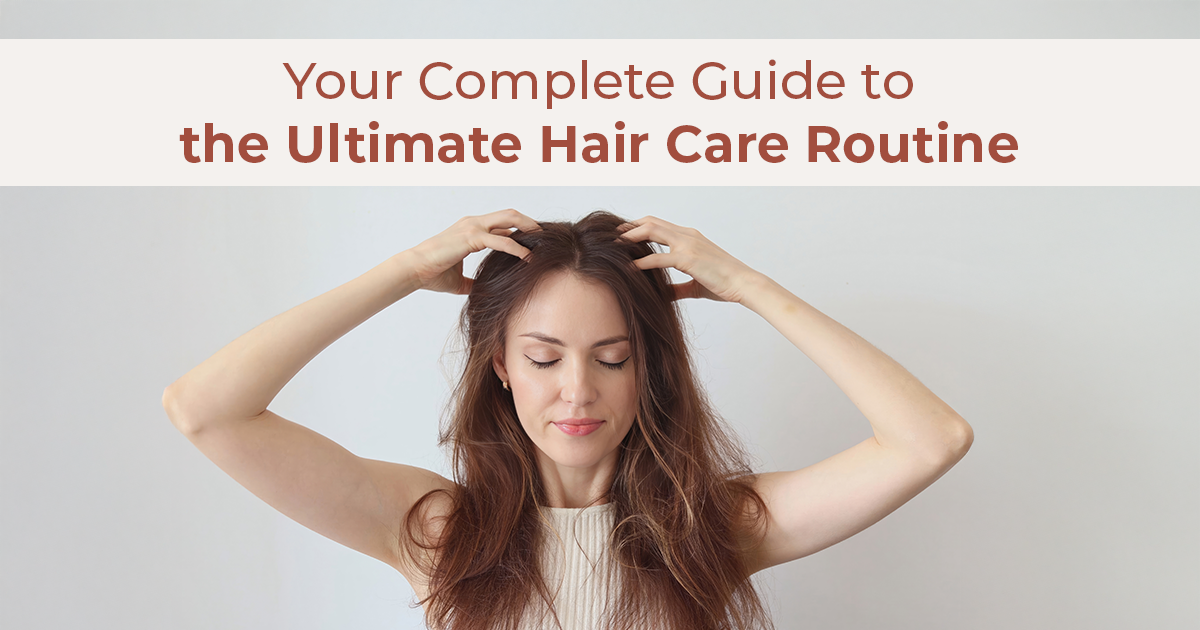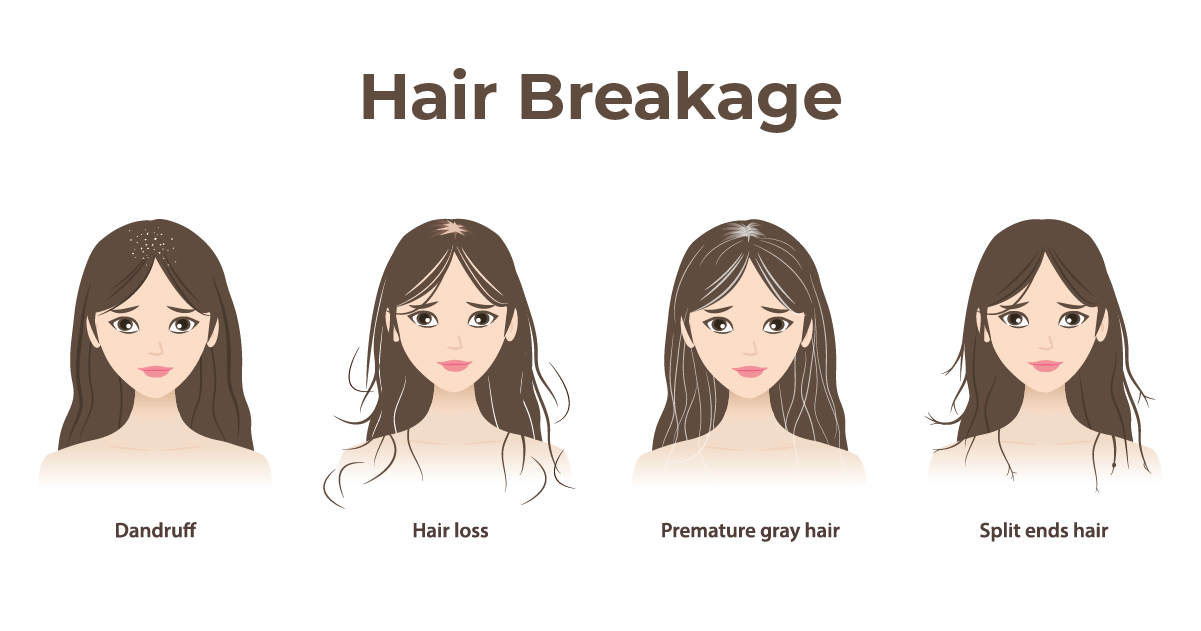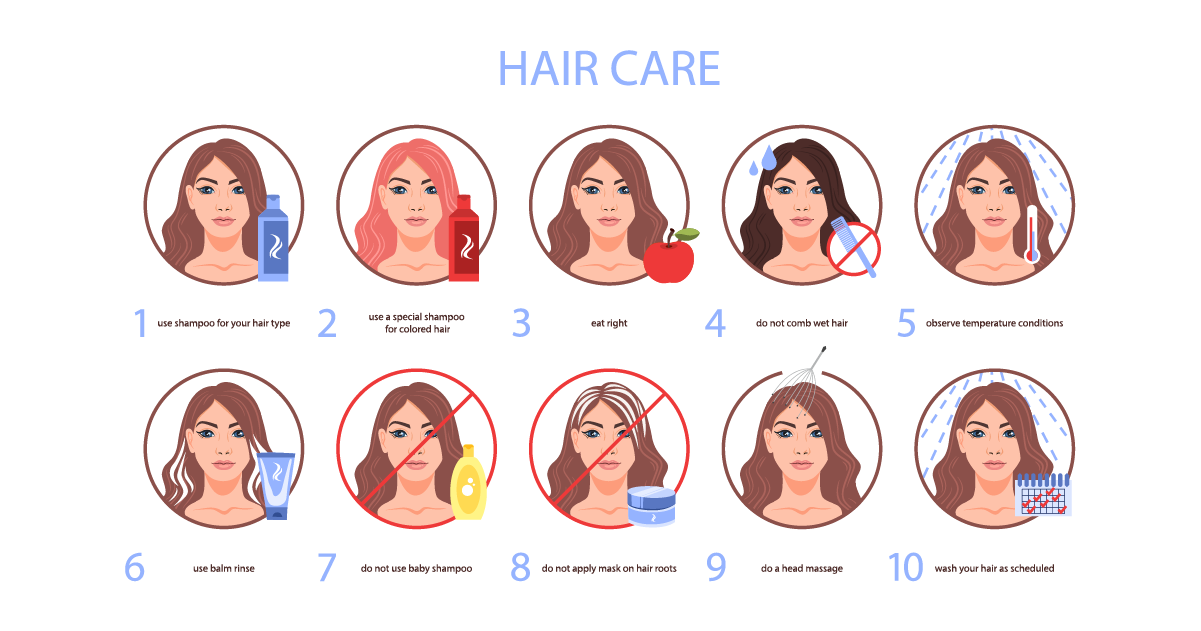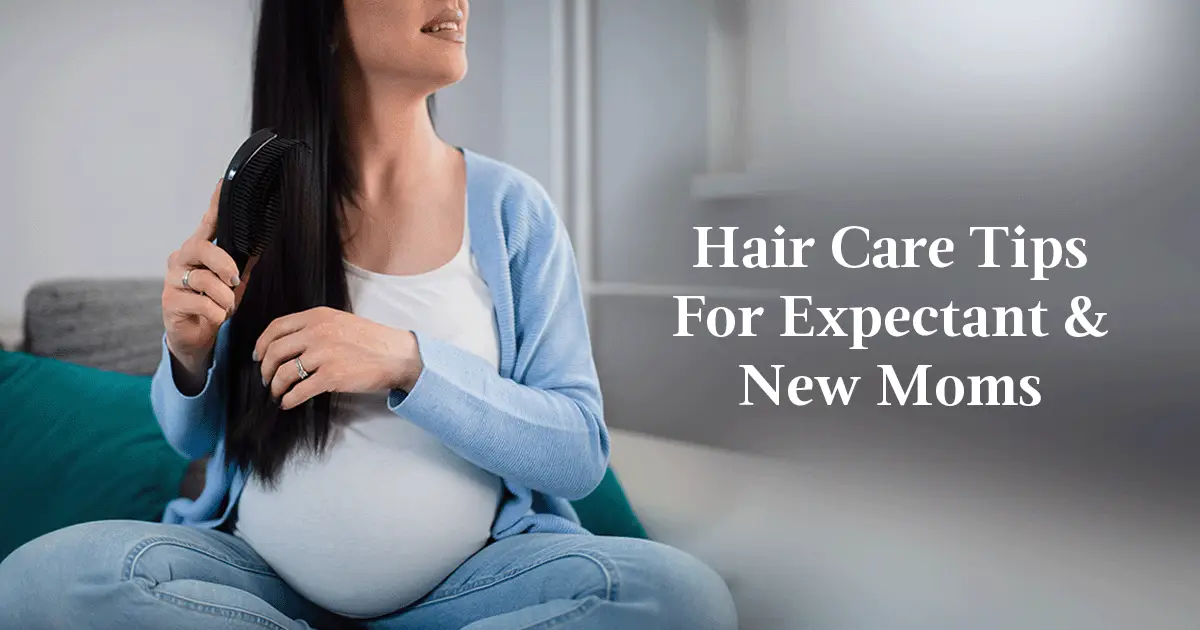
Do your tresses feel dull, lifeless, or low on bounce lately? If your answer is yes, then you should be aware that no shampoo or conditioner alone can fix it. What your hair really needs is a structured, consistent hair care routine that nourishes your hair from root to tip.
Hectic lifestyles, poor diets, and everyday stress can wreak havoc on both your skin and hair. While maintaining a perfectly healthy lifestyle may not always be realistic, following a consistent hair care routine definitely is.
A well-thought-out regimen can address specific hair concerns, nourish the scalp, improve texture, and restore natural shine. Since everyone’s hair needs are unique. Some may be battling with thinning, while it may be dandruff for others. In this blog, we’ll break down common hair concerns, show you how to tackle them effectively, and share expert tips to keep your hair healthy, shiny, and bouncy.
Key Takeaways
- A structured hair care routine is essential to restore hair from root to tip - shampoo and conditioner alone are not enough.
- Common hair concerns include hair fall, dryness and frizz, dandruff and itchy scalp, and hair breakage.
- An 6-step hair care routine, including oiling, cleansing, conditioning, masking, using serums, and gentle styling, can help maintain healthy hair.
- Daily habits like gentle detangling, limiting heat styling, regular trimming, and rinsing with cold water support better hair health.
- A balanced lifestyle with adequate sleep, hydration, and a nutrient-rich diet plays a crucial role in keeping hair healthy.
Tackling Specific Hair Concerns with Your Hair Care Routine
There is no universal hair care routine that suits everyone since we all have different hair types and concerns. Factors like environment, diet, stress, genetics and hard water can influence hair health.1,2 The common concerns include:
1. Hair Fall
Hair loss is one of the most common hair problems, although the reasons may differ. It may be caused by stress, nutritional deficiencies, hormonal changes, scalp conditions or other underlying reasons. 3 Regular oiling, proper cleansing, and using doctor-recommended serums formulated with minoxidil or peptides can support scalp health and reduce shedding. 4, 5, 6
2. Dryness and Frizz
Excessive use of heat stylers, harsh shampoos and environmental exposure can strip the hair of its natural protective coating, leading to frizz. 7, 8 Deep conditioners, hydrating oils and hair masks can help replenish the lost moisture. 9
3. Dandruff and Itchy Scalp
Dandruff is a common scalp condition that often leads to flaking and persistent itching.10 Using mild shampoos with anti-fungal ingredients like zinc pyrithione or ketoconazole can help. 11 However, it's always best to consult a doctor to confirm the underlying cause and choose the right treatment.
4. Hair Breakage
Hair shafts often weaken due to excessive brushing or detangling hair, heat styling tools or chemical treatments like hair botox, keratin treatments, etc.7, 12 Regular conditioning and oiling may help reduce frizz and make hair more manageable. 9

The Ultimate 6-Step Hair Care Routine
Building a step-by-step routine ensures that your hair gets the care it needs consistently. However, you do not have to engage in this process every time you wash your hair. Following this routine religiously once or twice a month may show desirable results. Here’s an effective 6-step hair care routine that works for most hair types:
Step 1: Hair Oil Massage
Massaging the scalp with warm oil nourishes hair follicles better, improves circulation and reduces breakage. As per research, coconut oil can effectively penetrate the hair shaft and protect against protein loss. 14 A light overnight oiling session once a week can provide intensive nourishment, strengthen the roots, and boost shine. 9,13,14 Before shampooing, lightly coat mid-lengths and ends with oil. This pre-wash treatment helps prevent hygral fatigue (over-swelling of hair shafts) and makes detangling easier.15
Step 2: Exfoliate
Oil and dirt build-up on your scalp can clog your follicles and cause dandruff, hair fall and fungal infection. While regular cleansing does remove dirt and oil, regular exfoliation helps get rid of accumulated grime, dead skin cells, dandruff flakes and other debris from your scalp. Using a scalp scrub once or twice a month helps to deep cleanse your scalp. 16 When choosing a scalp scrub, ensure you pick one that contains moisturising ingredients and is free from harmful chemicals.
Step 3: Cleanse Thoroughly
It is recommended to use a mild shampoo with no sulfates or parabens to remove dirt, sebum and product buildup. 9 Mild cleansers help in gentle cleansing without stripping the hair of its natural oils. Over-washing can lead to dryness, while inadequate washing can lead to dandruff. 17, 18
Step 4: Use Nourishing Conditioners
Conditioners used after shampoo or leave-in conditioners smooth the hair cuticle, reduce friction, and lock in moisture. Conditioners generally contain Ingredients like oils, waxes and silicones, which can enhance softness and manageability. 14
Step 5: Repair Damage with Hair Mask
Using a deep-conditioning or protein-based mask once or twice a week can improve elasticity and restore damaged strands. A hair mask helps to retain moisture and softness in your tresses and is great for managing frizzy hair.
Step 6: Treat with Serums
Hair serums with or peptide-based formulations can protect against UV, humidity, and heat, while sealing moisture into the cuticle. 19
Step 7: Style
Avoid excessive heat styling. Opt for air drying or low-heat tools. If you use styling tools, always apply a heat protectant serum beforehand.
Hair Care Tips for Healthy Hair
While the above-mentioned hair care routine will help you maintain your hair, certain daily hair care habits play a big role in strengthening your hair from within. Here are some expert-backed hair care routine home remedies and tips:
- Always brush or detangle your hair gently using a wide-toothed comb. If you are harsh with your tangled hair, you may end up with brittle hair or split ends. 20
- Minimise heat styling and limit it to once a week. Excessive heat damages keratin (a structural protein of a hair strand) and causes dryness. 21
- Get regular trimming done, once every 8-12 weeks, to avoid split ends.
- Try to rinse your hair with cold water as it helps to seal the cuticle and improve the shine of your locks. 22
- Lastly, adequate sleep, hydration and a nutrient-rich diet play a crucial role in supporting hair health.
Final Word
A good hair routine isn’t about pricey products - it’s about following a simple, consistent hair care routine with proven remedies tailored to your hair’s unique needs. With a thoughtful approach, both men and women can achieve stronger, shinier, and healthier hair naturally.
FAQs
Q1) What is the perfect hair care routine?
A consistent 7-step hair care routine, including oiling, exfoliating, cleansing, conditioning, applying a mask, serum application and smart styling, makes a perfect hair care routine, but it should be tailored to your hair type.
Q2) Which routine is best for hair growth?
Regular scalp oiling, mild cleansing, using serums, and maintaining good nutrition are key to growth.
Q3) What is best for daily hair use?
You can use a mild shampoo, leave-in conditioner or serum daily for your hair. Ensure you brush gently using a wide-toothed comb to avoid breakage.
Q4) What are 5 tips for healthy hair?
The 5 tips for healthy hair include oiling regularly, avoiding heat, trimming often, hydrating well, and following a balanced diet.
Q5) How to get silky hair in 7 days?
You can try a 7-day hair care routine with oiling, deep conditioning, and serum use.
Q6) What is the best hair care routine for dry hair?
Dry hair needs more hydration. Focus on oiling, hydrating conditioners, protein masks, and avoiding heat.
Q7) What is the best hair care routine for curly hair?
Curls should be scrunched after conditioning and not brushed to maintain their shape. Use sulfate-free shampoos, creamy conditioners, and leave-in serums.











